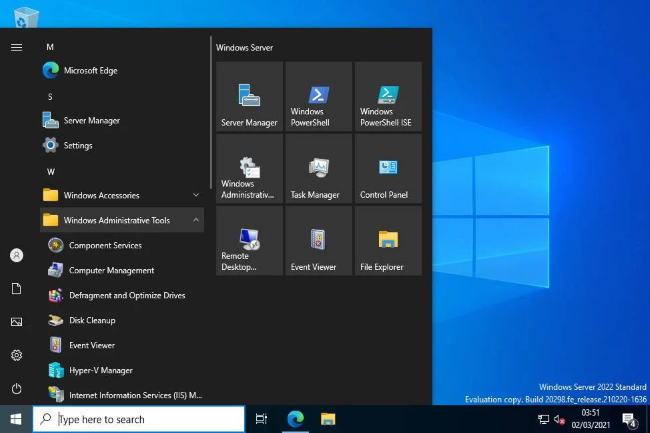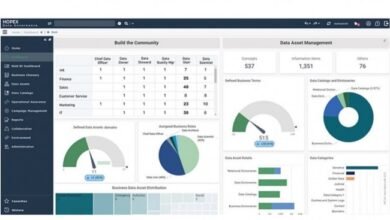Microsoft quietly launches Windows Server 2022

It is on the sly that Microsoft has made available a version available for all of Windows Server 2022. This edition marks the end of semi-annual support and the return of long-term support (LTSC). It also and above all offers several evolutions and functionalities.
Traditionally more expansive, Microsoft has chosen discretion for the arrival of Windows Server 2022. It is indeed in the middle of August that the firm announced the availability of the GA (General Avalaibility) version. An ISO is available for evaluation for 180 days at this address. Administrators will have the choice of 3 versions of the OS: Standard, DataCenter and DataCenter Azure Edition.
The discontinuation of semi-annual updates and the return of LTSC
Apart from the innovations introduced by Microsoft, Windows Server 2022 marks the end of a practice that the publisher had been experimenting with for four years: the delivery of multiple Windows Server updates each year. Now, the publisher will revert to updates every two years, a schedule that it had applied and maintained for decades. Compared to the accelerated version and update regime of Windows, first adopted for the consumer OS and then for the server version, this change is one of the biggest setbacks of the Redmond firm. “Starting with Windows Server 2022, there will be only one broadcast channel available, the Long-Term Servicing Channel (LTSC),” Microsoft explains in its documentation on the schedule. Windows Server broadcast. “Through the LTS channel, a major version of Windows Server is released every 2-3 years. Users are entitled to 5 years of general support and 5 years of extended support ”.
In the same document that designates the Long-Term Servicing Channel (LTSC) as the only version of Windows Server 2022, Microsoft also hinted – without saying it clearly – that the Semi-Annual Enterprise Channel or Semi-Annual Channel ( SAC), which denotes the two-update-per-year delivery schedule, is dead and buried for Windows Server. “Previously released SAC versions for Windows Server that still have support, including versions 1909, 2004, and 20H2, will receive that support,” the publisher said. But there will be no future SAC versions.
Security and cloud on the menu of Windows Server 2022
If support is an important element, Windows Server 2022 brings its share of new features and contributions. Among its features, particular emphasis was placed on security with the Secured-Core program integrating the TPM 2.0 module (already mentioned to migrate to Windows 11), the protection of firmware and the VBS function. In addition, Microsoft announces support for TLS 1.3, DNS over HTTPS, strong encryption (up to AES-256-GCM and AES-256-CCM) for SMB (attack vector for Eternal Blue exploits of the NSA) and the extension of nested virtualization on AMD chips (this feature was previously only available for Intel CPUs). Nested virtualization allows you to create virtual machines within a VM via Hyper-V.
Some of the most interesting contributions concern the Datacenter Azure Edition and the Azure Stack HCI version. Exclusive features include Hotpatch, which allows administrators to apply fixes without rebooting, and SMB over QUIC, for secure access to shared files over the Internet. For all editions, Microsoft is pushing the Edge browser under Chromium, already present on the consumer versions of Windows.
The orientation to Azure is clearly seen in Admin Center which manages several services: Azure Hybrid Center, Kubernetes Services, Backup, File Sync, Monitor and Security Center. Windows Server 2022 also includes a tool for migrating old file servers (including NetApp) to Azure. On the container side, Admin Center has been updated to facilitate containerization of .NET applications. Once the application is in a container, it is possible to host it on Azure Container Registry and then deploy it to other Azure services, such as AKS. Microsoft should give more details on the evolutions of Windows Server 2022 at an event organized on September 16 during the Windows Server Summit.




